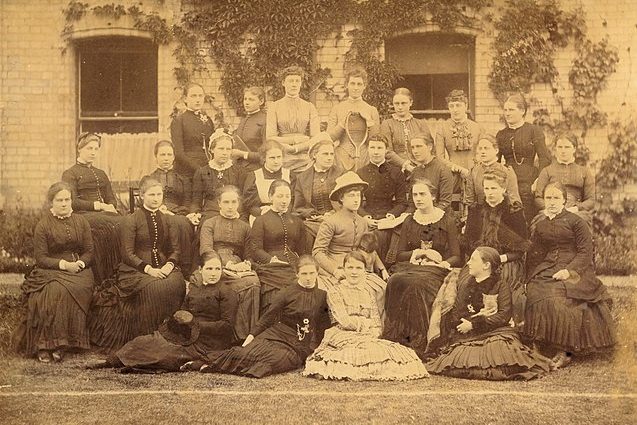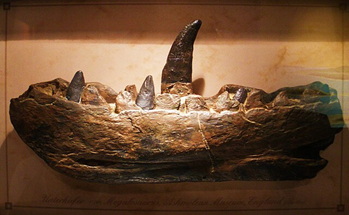The First Women at the University of Oxford
It has been 101 years since women were formally admitted to the University of Oxford. Let’s take a look back at how it all happened and what a fight it was for the women involved. Beginning with the story of a very bright and fiercely tenacious young woman known as Annie Rogers.
In 1873, Annie Rogers took part in the examinations set by Oxford’s Delegacy of Local Examinations and came top in both the junior and senior exams. This remarkable accomplishment meant Annie was entitled to an Exhibition, essentially a scholarship, at either Balliol or Worcester College. When it was discovered that Annie was a woman, her place and her scholarship were withdrawn and offered to a man instead. Annie Rogers became a campaigner for women’s admittance to the University and went on to write a book Degrees by Degrees in which she tells the story of her campaign and eventual success, some forty years later, when, in 1920, women were finally allowed to receive their degrees. Annie Rogers became the first, along with 40 other women, to retrospectively receive their degrees from the University of Oxford. Vera Brittain was among the first women to receive their degrees and described the experience as “tense with the consciousness of a dream fulfilled…”.
During the interim period between Annie’s scholarship withdrawal in 1873 and the full admittance of women to the University of Oxford and ‘a dream fulfilled’ in 1920, a long fight was fought. In response to the controversy surrounding Annie Rogers’s exceptional performance and the withdrawal of her scholarship, the University set up separate degree-level examinations for women. Annie Rogers took the exams for women and was awarded first-class honours in Latin and Greek. Women at this time were not permitted to become full members of the University, they were educated separately from the male students and were examined separately as well. They were awarded ‘degree-level’ qualifications, but not actual degrees, which were preserved for male students only.
A lecture scheme for ladies was set up in 1873. These ‘Lectures for Ladies’ were set up informally by the wives and sisters of Oxford Dons. These lectures took place in a room in the Clarendon Building and continued for six years before becoming more formal in 1879, when the Association for Promoting the Higher Education of Women in Oxford (AEW) took over the organisation. The ‘Lectures for Ladies’ became exclusively focused on women who were taking the exam and were supported by many influential women and some men who supported the cause. Also in 1879, the first women’s colleges – Somerville and Lady Margaret Hall were founded. With St Hughes and St Hilda’s following in their footsteps in 1886 and 1893 respectively. St Anne’s was also established in 1879 as society for home students who could not afford the other colleges. Whilst women were attending women’s colleges at Oxford and taking University exams, they were not considered full members of the University and could not obtain their degrees until 1920.
The first degrees for women were granted by the University of London in 1878 and by 1895 all British universities had opened their degrees to women, with the exception of Oxford and Cambridge. Oxford finally opened their degrees to women in 1920, with Cambridge’s Girton College holding out even longer, not awarding women their degrees until 1948.
As women became more integrated physically within the University they were also forced to put up with the relentless sexism of the period and its utterly incongruent sentiment. Women who dressed in a traditional or conservative way were referred to as ‘freaks’, whilst women who observed the fashionable trends of the period were chastised. In 1914, the principal of The Society of Oxford Home-Students received “a very tiresome complaint that the men examinees are disturbed by the way our students sit in their tight skirts and show their legs.” If it was tiresome then it is incredibly weary now.
Whilst women were granted full membership of the University in 1920, they did not receive full equal status. A quota limiting the number of women allowed to attend Oxford kept women as a minority group and was not lifted until 1957; the heads of the women’s Colleges were not permitted to become Vice-Chancellor until 1959; women were not admitted to full debating membership of the Oxford Union until 1961; and it was not until 1977 that the women’s Colleges were allowed to be involved in the election of Proctors – the University’s most senior officers. Today Oxford has come on leaps and bounds and now awards more degrees to women members than it does to men. As we look back at the battles fought and won by the women who came before us, we celebrate their tenacity as we hope to do our best for the women who come after us.
Written by volunteer Laura Lys – creator of the Riot Room, a space dedicated to the promotion of women and women-centred culture.
Want to write your own Oxford-inspired post? Sign up as a volunteer blogger.



